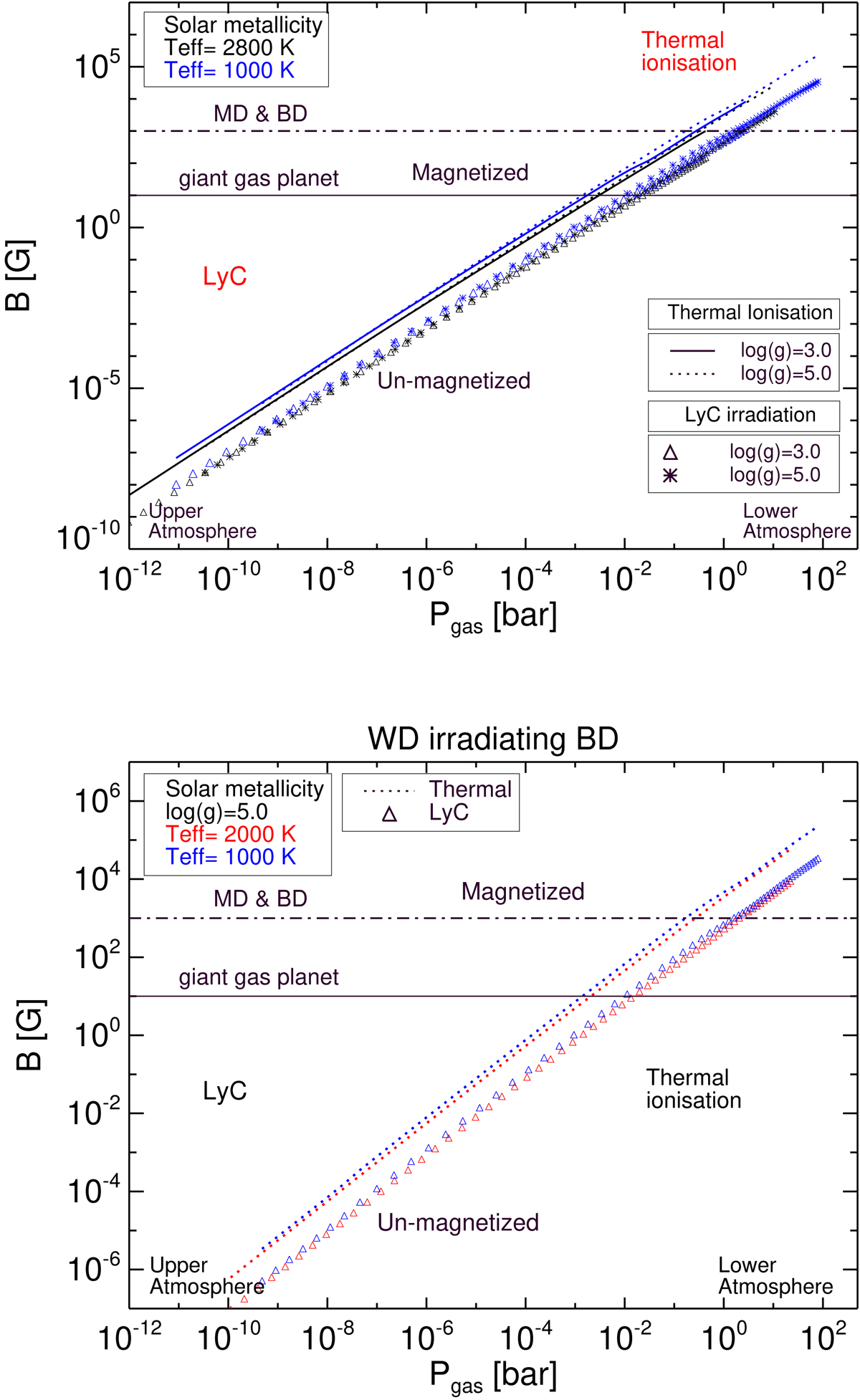Fig. 5.

Magnetic flux density, B = Bs, required for the electrons to achieve magnetic coupling in ultra-cool objects. The effect of Lyman-continuum irradiation is compared to the effect of thermal ionisation (the solid line depicts log(g) = 3.0, and the dotted line shows log(g) = 5.0). Top: brown dwarfs irradiated from an O3 star from a distance of 0.5 pc in a star-forming region (asterisks – late-M dwarfs and young brown dwarf atmospheres, log(g) = 3.0; the triangle – old brown dwarfs, log(g) = 5.0). Bottom: binary system with a WD star irradiating a brown dwarf from a distance of d = 0.006 AU (blue triangle – cold, old brown dwarf, red triangle – warm, old brown dwarf).
Current usage metrics show cumulative count of Article Views (full-text article views including HTML views, PDF and ePub downloads, according to the available data) and Abstracts Views on Vision4Press platform.
Data correspond to usage on the plateform after 2015. The current usage metrics is available 48-96 hours after online publication and is updated daily on week days.
Initial download of the metrics may take a while.


